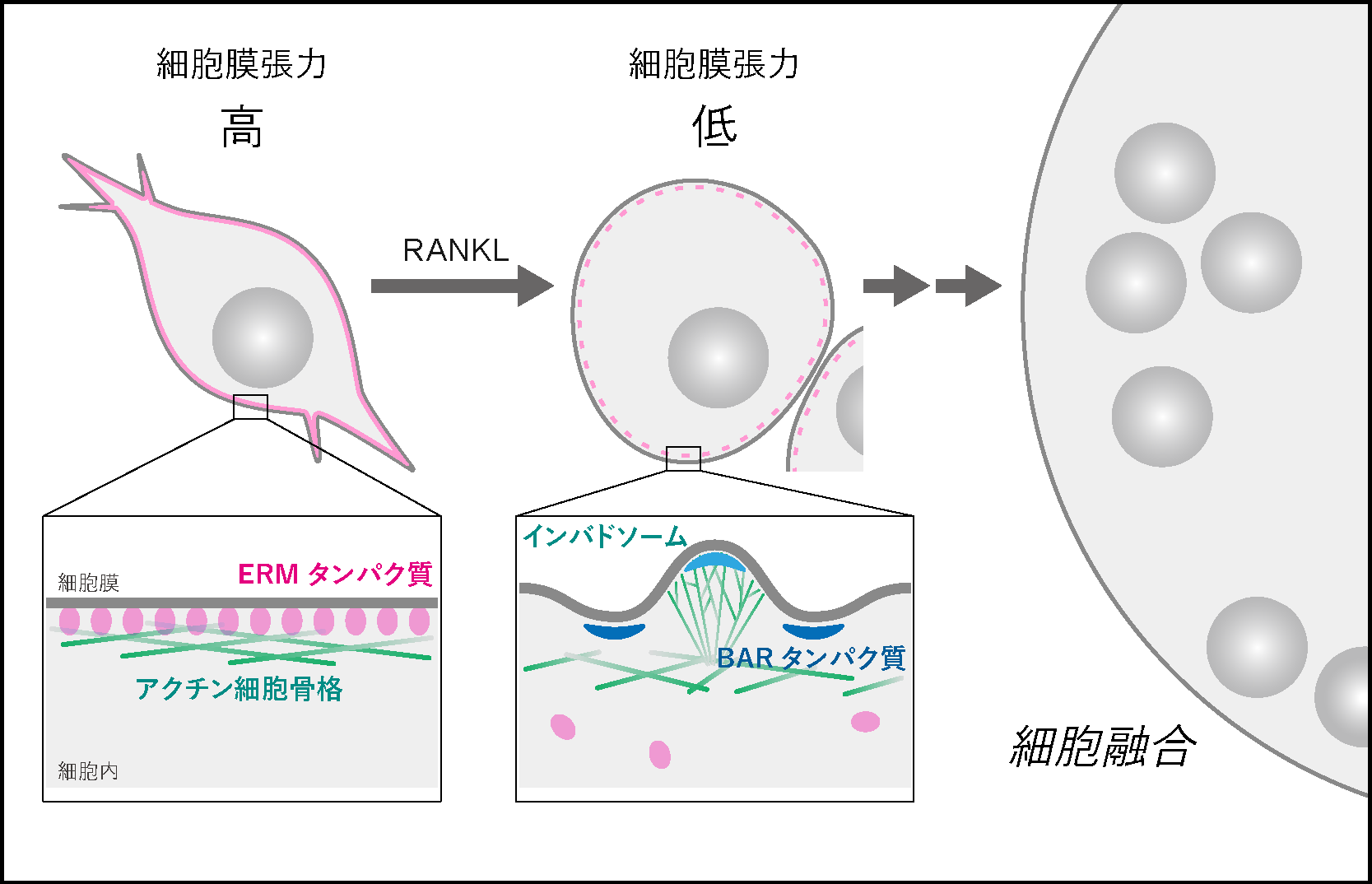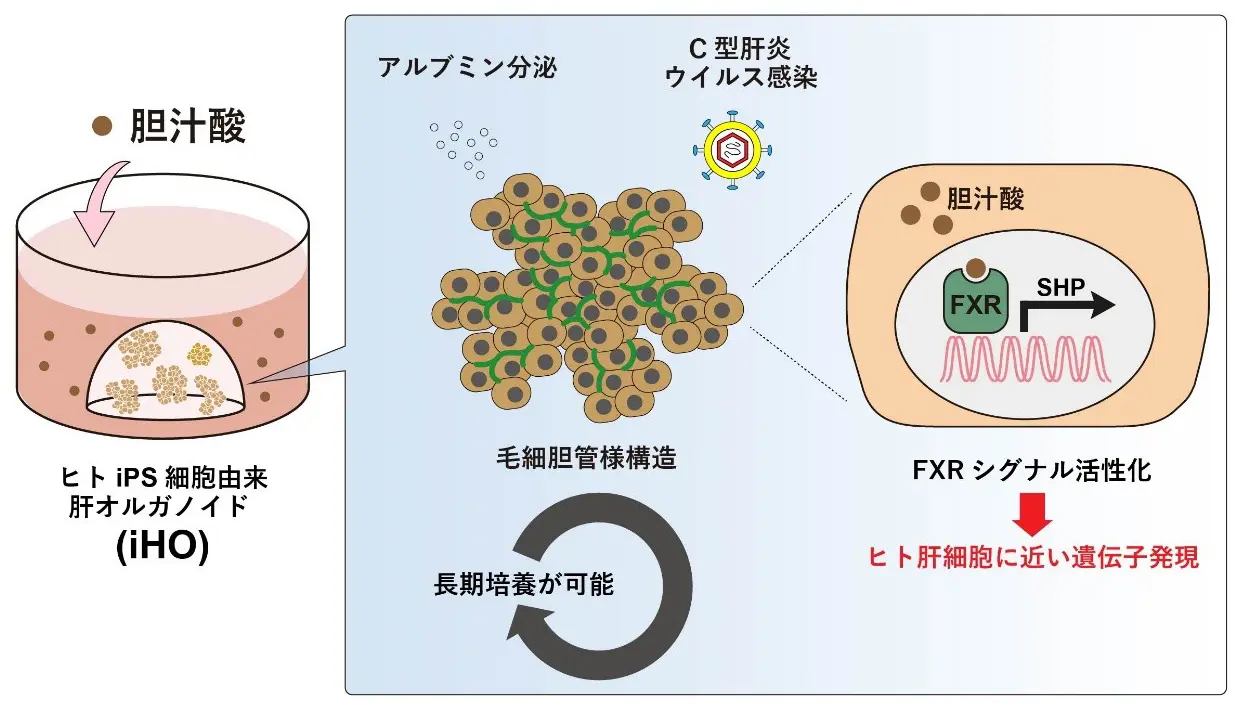2025-05-14 神戸大学
 研究の概要図:細胞膜張力の低下が細胞融合を引き起こすメカニズム
研究の概要図:細胞膜張力の低下が細胞融合を引き起こすメカニズム
細胞融合を誘導する前、細胞膜とアクチン細胞骨格とはERMタンパク質によって架橋され、細胞膜張力が高い状態に保たれている。細胞膜直下のERMタンパク質が外れて細胞膜張力が低下すると、これを感知するBARタンパク質がインバドソームの形成を誘導し、細胞融合が引き起こされる。
<関連情報>
- https://www.kobe-u.ac.jp/ja/news/article/20250514-66657/
- https://rupress.org/jcb/article/224/7/e202411024/277915/Mechanical-control-of-osteoclast-fusion-by
膜-皮質付着およびBARタンパク質による破骨細胞融合の機械的制御
Mechanical control of osteoclast fusion by membrane-cortex attachment and BAR proteins
Yumeng Wan,Yuri L. Nemoto,Tsukasa Oikawa,Kazunori Takano,Takahiro K. Fujiwara,Kazuya Tsujita,Toshiki Itoh
Journal of Cell Biology Published:May 08 2025
DOI:https://doi.org/10.1083/jcb.202411024
Osteoclasts are multinucleated giant cells that are formed by the fusion of precursor cells. Cell–cell fusion is mediated by membrane protrusion driven by actin reorganization, but the role of membrane mechanics in this process is unknown. Utilizing live-cell imaging, optical tweezers, manipulation of membrane-to-cortex attachment (MCA), and genetic interference, we show that a decrease in plasma membrane (PM) tension is a mechanical prerequisite for osteoclast fusion. Upon RANKL-induced differentiation, ezrin expression in fusion progenitor cells is reduced, resulting in a decrease in MCA-dependent PM tension. A forced elevation of PM tension by reinforcing the MCA conversely suppresses cell–cell fusion. Mechanistically, reduced PM tension leads to membrane protrusive invadosome formation driven by membrane curvature-inducing/sensing BAR proteins, thereby promoting cell–cell fusion. These findings provide insights into the mechanism of cell–cell fusion under the control of membrane mechanics.


